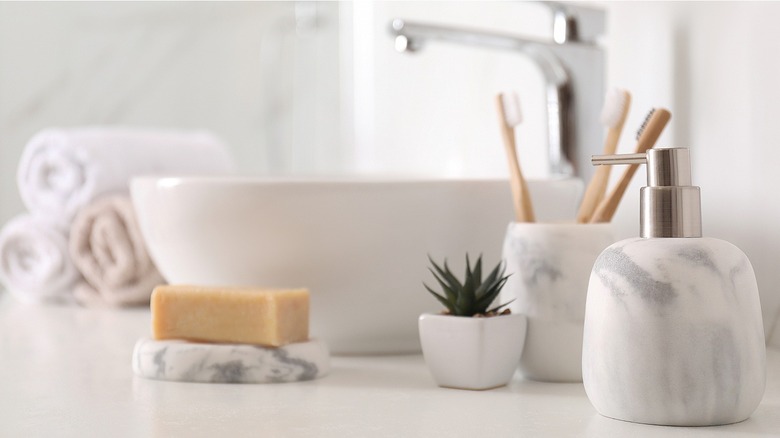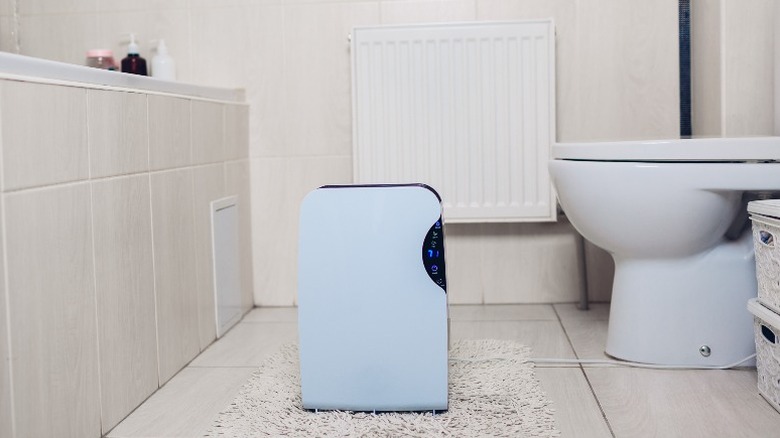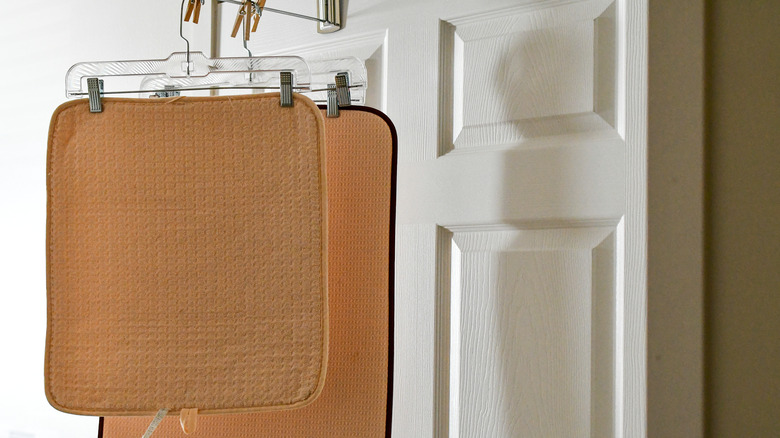The Bathroom Items That Can Become A Mold Breeding Ground
Mold in the bathroom is a common issue due to the high moisture levels and limited airflow in this space. It commonly grows in and among a number of bathroom items, including toothbrush holders, shower curtains (especially fabric ones), bath mats, loofahs, sponges, and similar bathing accessories. These things get moist and/or come in contact with water frequently so they're susceptible to mold growth if they aren't dried, washed, or replaced as regularly as they should be.
Regular cleaning, proper drying of wet items, and maintaining good ventilation are crucial for preventing and addressing bathroom mold. Not only can mold affect your health, but it can also cause damage to surfaces if left unchecked. To counter mold growth in the bathroom, the first thing to do is make sure the bathroom doesn't stay damp and that air is allowed to flow through the room. Ideally, items like bathmats and towels should be aired out after every use and washed frequently, while toothbrush holders should be turned upside down and emptied on a regular basis to rid them of any excess water.
How to prevent mold in the bathroom
The main cause of mold is moisture. If moisture is allowed to settle for long enough, spores are given the chance to grow and spread. This is why cleaning isn't enough when preventing mold in the bathroom; you also need to ensure the room dries out properly after you clean it. It can be as simple as opening the door and window every time the space is cleaned or after you take a shower so there's adequate ventilation throughout. Something else you can do is to get your bathroom walls professionally insulated so they maintain the right temperature.
Other preventive measures are running the fan during and after showers, running a dehumidifier, and wiping down wet surfaces after use. The cabinet underneath the bathroom sink is another potential problem area so check it frequently for leaks or condensation buildup and address any problems promptly. You can also spray your shower after use with a mold-killing product or something more natural like lemon juice or white vinegar.
How to deal with mold growth
If mold is already present in your bathroom, you have to remove it either by yourself or with professional help. A serious infestation typically requires a mold remediation specialist who can assess the situation and provide the necessary assistance. Per the Environmental Protection Agency, if the mold area is greater than 10 square feet, you should call in the pros.
If the mold is on items that are heavily contaminated and can't be salvaged, throw them out and replace them. If it's on an item and you want to clean it, first put on protective gloves, goggles, and a mask to avoid direct contact with the mold spores. Next, follow the instructions on the mold-removal product you've chosen and use a brush or sponge to scrub the affected surfaces thoroughly. You can also use a mix of bleach and water or baking soda and water.
For soft materials, you can try washing them. A lot of bath mat types, for example, can be run through the washing machine, so wash them on hot or warm settings with detergent and white vinegar. When the mold is removed, rinse with water and ensure the item is completely dry. Throw away all cleaning materials used to prevent recontamination.


